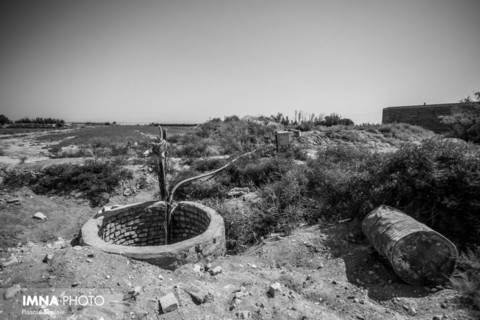Iran (IMNA) - Land subsidence, a gradual settling or sudden sinking of the Earth's surface due to subsurface movement of earth materials is mainly caused by aquifer-system compaction, drainage, and decomposition of organic soils, underground mining, oil and gas extraction, hydro compaction, natural compaction, sinkholes, and thawing permafrost.
Subsidence results in significant economic losses in the form of structural damage and high maintenance costs. This affects roads and transportation networks, hydraulic infrastructure, sewage systems, buildings, and foundations. The total damage worldwide is estimated at billions of dollars annually.
Alireza Shahidi, head of the Geological Survey and Mineral Explorations Organization (GSI), has recently warned that the amount of water that penetrates into the ground is not proportional to the amount of water extracted, he said that this has caused the phenomenon of subsidence in all parts of the country except for the provinces of Gilan and Mazandaran.
The phenomenon is not limited to Iran, but the country has the highest withdrawal of aquifers and compared to other countries in the world, and as a result, the average rate of land subsidence in Iran reaches up to 25 cm per year.
In fact, this irreparable phenomenon intensifies the damage of other natural incidents such as earthquakes or floods, destroys cultural and ancient monuments, destroys agriculture, affects urban and rural areas, and destroys roads and transportation systems.
In addition to environmental consequences, subsidence also has economic, social, and cultural damage. Loss of land means loss of food security, production, and increased migration.
Out of 606 plains in the country, more than 300 are in acute condition and are forbidden to enter due to continued drought, declining rainfall, and uncontrolled abstraction of groundwater in recent decades.
Alireza Shahidi, head of Geological Survey and Mineral Exploration said in May that 80 percent of the groundwater is withdrawn annually in Iran, which outpacing the global rate.
In the whole world, water resources withdrawal is between 3 to 20 percent, and when it reaches 40 to 60 percent which is considered problematic, and it will be a crisis when exceeding 60-80 percent, Shahidi noted.
Over the past decades, some of the aquifer levels dropped by 100 centimeters.
According to the definitions announced by the Ministry of Energy, the water plains of each region are divided into three categories of free, forbidden, and critical based on the quantitative and qualitative deterioration of groundwater aquifers.
Currently, programs such as the groundwater reclamation and balancing project have been implemented in the country, and it is important to continue to allocate funds to these projects to make them operational.
Geologists call subsidence a “silent earthquake” because an earthquake is instantaneous and its effects are visible at the same time, but subsidence is the cause of environmental depletion and its impact appears gradually; which is getting a big threat in the country.
Gholam-Ali Jafarzadeh, head of the National Cartography Center, lamented that some 29 out of 31 provinces are currently at risk of subsidence.
One of the most critical areas of the country in terms of subsidence is the plains of Isfahan province; The province has 35 plains and a significant increase in water withdrawal from aquifers and underground resources has caused 27 plains to be in poor condition so that any water extraction is prohibited.
Tehran is the most populous city in West Asia, which is sinking into the ground at an alarming rate.
The metropolis is home to some 15 million people and is a victim of dramatic subsidence. New research reveals that the region is sinking by more than 25 centimeters annually in some parts.
Tehrantimes


Your Comment